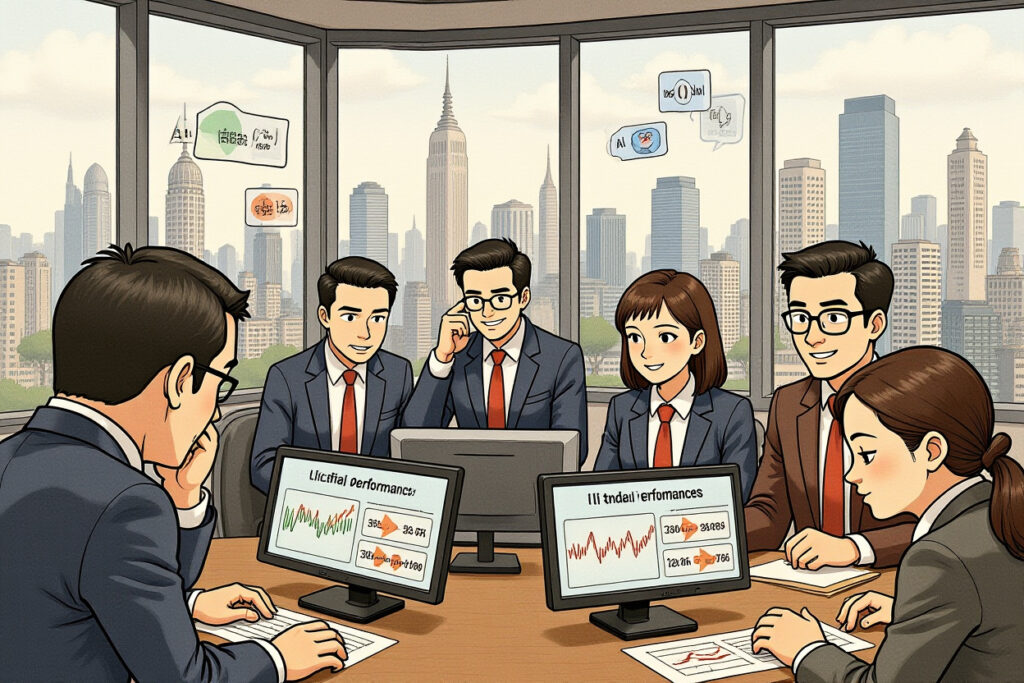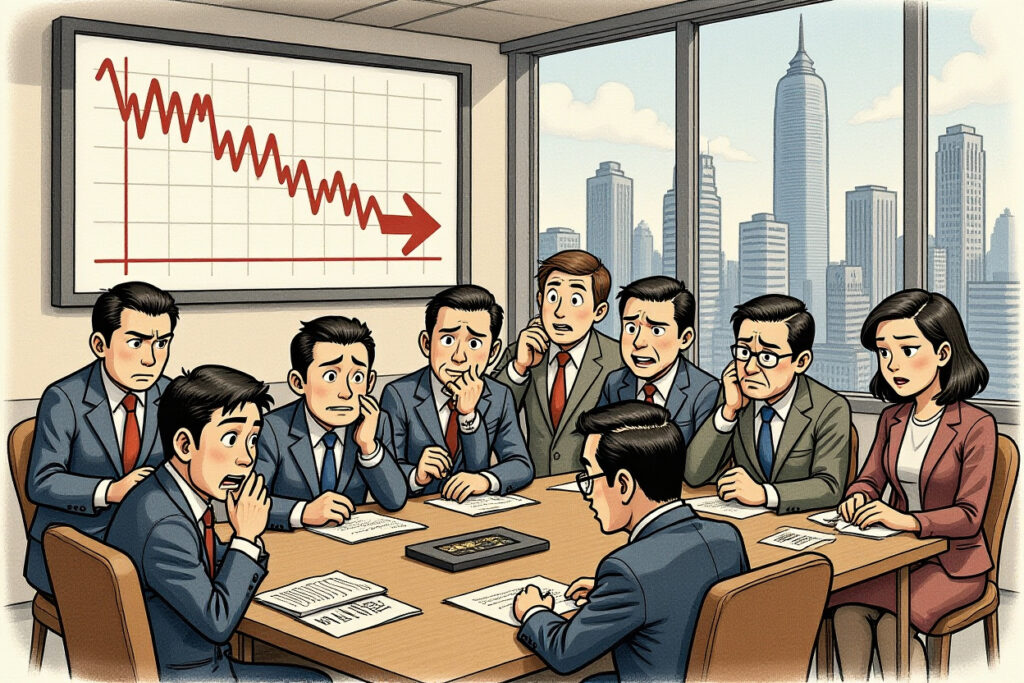– Zotye Auto’s T300 production line in Chongqing was forcibly demolished by court order, halting any chance of production resumption in 2025. – Despite operational shutdowns and a mere 14 vehicles sold in 2024, the company’s stock experienced a surprising rally with consecutive涨停 (limit-up) gains. – Historical success with models like the SR9, dubbed ‘Porsche mimic’, contrasts sharply with current quality issues and financial losses exceeding RMB 1 billion in 2024. – Executive compensation saw a significant increase while the company reported massive asset impairment provisions, deepening investor concerns. – The paradox of rising stock values amidst operational collapse highlights speculative trading risks and uncertainties in China’s automotive sector. On September 9, 2025, Zotye Auto (000980.SZ) dropped a bombshell announcement: its T300 vehicle assembly line, under subsidiary Hunan Jiangnan Automobile Manufacturing Co., Ltd. Chongqing Branch, had been forcefully dismantled by the Chongqing Bishan District People’s Court. This court-ordered demolition effectively extinguishes any hope of production resumption for 2025, plunging the company into deeper uncertainty about its ongoing viability. Yet, in a bizarre twist, the automaker’s shares rallied vigorously, securing two consecutive limit-up gains and pushing its market valuation to RMB 16.287 billion. This paradox underscores a tale of rise, fall, and speculative frenzy in China’s volatile auto industry. The Court-Ordered Demolition: What Exactly Happened? The court-ordered demolition of Zotye’s T300 production line in Chongqing marks a critical juncture for the beleaguered automaker. This wasn’t merely a procedural setback; it was a definitive blow to any operational revival plans for 2025. The强制执行 (enforcement action) stemmed from unresolved legal disputes, likely involving creditors or lessors, though specific details remain undisclosed. Impact on Production Capabilities With this court-ordered demolition, Zotye Auto has lost a key asset—albeit leased—that was integral to its T300 model. The company clarified that this line was rented, and it still owns two bases in Changsha and Yongkang. However, both facilities are idle, and without the Chongqing line, restarting production becomes logistically and financially unfeasible. The demolition thus amplifies existing operational weaknesses. Legal and Financial Ramifications Such a court-ordered demolition often signals severe financial distress. It suggests that Zotye may have defaulted on lease agreements or other contractual obligations, leading creditors to seek judicial intervention. This action not only disrupts production but also damages investor confidence, as it highlights liquidity crises and potential insolvency risks. Zotye’s Rollercoaster History: From ‘Porsche Mimic’ to Production Halts Founded in 2003, Zotye Auto once epitomized ambitious growth in China’s auto sector. Its peak came in 2016 with the launch of the SR9, a model strikingly similar to Porsche’s Macan, earning it the nickname ‘Porsche Tai’ online. That year, sales surged to 333,100 units, propelling it into China’s top 10 automotive brands. The Rise and Fall of a Copycat Strategy Zotye’s strategy of emulating luxury designs initially paid off, tapping into aspirational demand among budget-conscious consumers. However, this approach backfired as quality issues emerged. Unlike genuine luxury brands, Zotye vehicles suffered from reliability problems, leading to plummeting sales—from over 300,000 units annually in 2016-2017 to just 14 vehicles sold in 2024. The court-ordered demolition of its production line is a symbolic endpoint to this decline. Financial Performance Over the Years The company’s financial health deteriorated sharply post-2018. Revenue fell to RMB 558 million in 2024, down 23.96% year-over-year, while net losses hit RMB 1 billion. Notably, RMB 1.014 billion of this loss came from asset impairment provisions, indicating write-downs on outdated or unsellable inventory. Despite this, executive pay rose significantly, with Chairman Hu Zeyu receiving RMB 1.965 million in compensation. The Stock Market Paradox: Rallying Amidst Collapse In a perplexing turn, Zotye’s stock defied operational woes, jumping连续涨停 (consecutive limit-ups) in early September 2025. Shares closed at RMB 3.23 on September 9, up 10% for the day, with a market cap nearing RMB 16.3 billion. This rally contrasts starkly with the company’s court-ordered demolition announcement and ongoing production halts. Speculative Trading and Market Sentiment Analysts attribute this anomaly to speculative retail investing, where traders bet on distressed stocks for short-term gains, ignoring fundamentals. The absence of operational 4S stores—confirmed by the company—further underscores the disconnect between stock performance and reality. Such volatility is common in emerging markets but poses significant risks for uninformed investors. Regulatory and Investor Implications This situation may attract regulatory scrutiny, as erratic stock movements could indicate market manipulation or misinformation. For investors, it serves as a cautionary tale about due diligence. Relying on hype rather than tangible metrics—like the court-ordered demolition impacting production—can lead to substantial losses. Financial Analysis: Deciphering the RMB 1 Billion Loss Zotye’s 2024 financials reveal a precarious state. The RMB 1 billion loss primarily stemmed from asset impairments, meaning the company wrote down values of non-productive assets. This includes obsolete inventory, idle machinery, and possibly the very production line subject to court-ordered demolition. Breakdown of Asset Impairments The RMB 1.014 billion impairment suggests that Zotye held assets—like unsold vehicles or unused equipment—that lost value due to non-use or market irrelevance. This is a common tactic in struggling firms to ‘clean up’ balance sheets but signals deep-seated issues. With production halted, these assets generate no revenue, making them liabilities. Cash Flow and Liquidity Concerns The company’s inability to secure operational funding is critical. Without cash flow from sales, Zotye can’t reinvest in R&D or modernize facilities, perpetuating a cycle of decline. The court-ordered demolition exacerbates this by removing a potential revenue stream, however limited. The Road Ahead: Can Zotye Auto Survive? Zotye’s future hinges on resolving its liquidity crisis and restructuring debt. However, the court-ordered demolition of a key production asset dims prospects for a near-term turnaround. The company may explore asset sales, partnerships, or even bankruptcy protection, but investor skepticism remains high. Potential Strategies for Revival If Zotye secures funding, it could pivot to electric vehicles (EVs) or hybrids, aligning with China’s green energy policies. However, this requires substantial investment and technological capability—areas where Zotye has lagged. Alternatively, mergers or acquisitions might offer a lifeline, but the company’s tarnished reputation could deter partners. Lessons for the Automotive Industry Zotye’s story highlights the risks of overreliance on imitation without innovation. As global automakers shift toward electrification and smart tech, traditional players must adapt or face obsolescence. The court-ordered demolition serves as a stark reminder that operational assets are only valuable if utilized effectively. Zotye Auto’s saga—from mimicry-driven success to court-ordered demolition and speculative stock rallies—offers crucial insights for investors and industry observers. The company’s inability to resume production, coupled with financial losses and executive compensation controversies, paints a bleak picture. Yet, the stock market’s irrational exuberance underscores the disconnect between perception and reality in high-risk trading. For sustainable growth, automakers must prioritize innovation and quality over shortcuts. Investors, meanwhile, should look beyond short-term spikes and assess fundamental viability. As Zotye navigates its uncertainties, the broader lesson is clear: in today’s competitive auto landscape, resilience requires more than just copying—it demands authentic transformation. Dive deeper into automotive industry trends by subscribing to our newsletter for expert analysis and updates.
Zotye Auto Stock Soars Despite Court-Ordered Production Line Demolition: A Deep Dive into the Paradox




